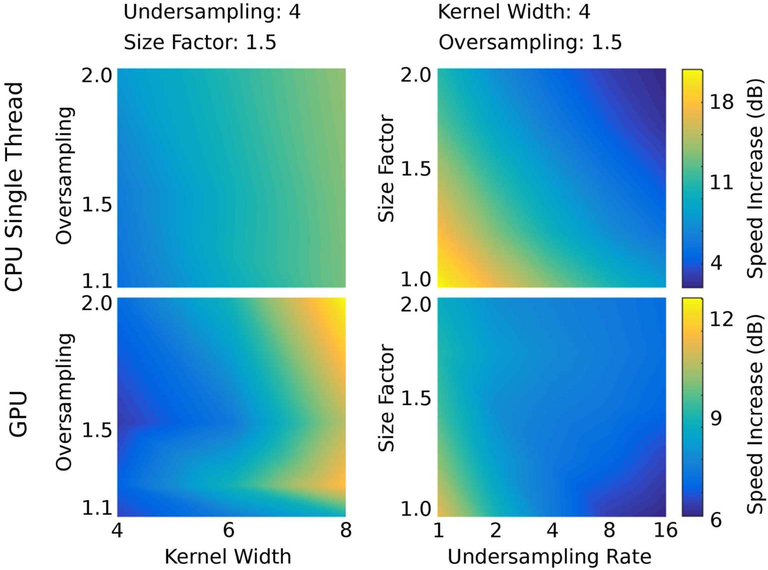Figure 3:
Rates of speed increase for Toeplitz compared to NUFFT for the gradient computation (i.e., for NUFFT and for Toeplitz) for both CPU and GPU implementations. The left panels show trends as the kernel width and oversampling ratio are varied, while the undersampling rate is fixed at 4 and the FOV size factor relative to the nominal FOV of 128×128×64 is fixed at 1.5. The right panel shows trends as the undersampling rate and size factor are varied, while the NUFFT oversampling and kernel width are fixed to 1.5 and 6, respectively. Timings for 3D cones and radial trajectories were averaged with each other before computing the speed increases (individual trends were similar). The speed increase rates in decibels (dB) were computed using 10log10(timeNUFFT/timeToeplitz).

